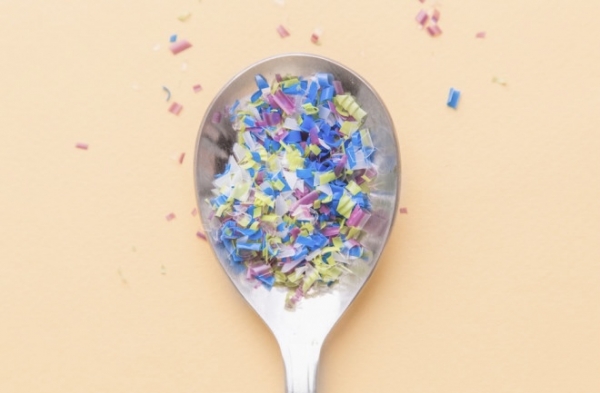
Microplastics (MPs) are everywhere: from the Arctic snow to the deepest oceans, they can also enter the human body via food, drink, and the atmosphere. According to the University of Newcastle, Australia, people intake 2,000 pieces of plastic every week, which is equal to the weight of a credit card. In March, MPs were even detected in human blood, causing more concern about the problem.
MPs are any small pieces of plastic less than five millimeters in length. They are categorized into two types: primary and secondary. Primary MPs are plastic fragments that are already five millimeters in length when first produced. These are found in cosmetics and personal care products, usually in the form of “microbeads”. Secondary MPs are particles that result from the breakdown of larger plastic products. Plastics should be recovered and recycled after being used, but much of the plastics used in daily products, industrial uses, and aquaculture are freely entering the ocean without being collected. According to the Centre Scientifique de Monaco, more than 10 million tons of plastic enter the ocean every year. The majority break down into secondary MPs and accumulate in coastal and deep-sea sediments. These MP particles are conveyed to the human body through the biological accumulation of MPs in plankton, invertebrates, and vertebrates.
MPs contain toxic chemicals such as carcinogens, neurotoxins, and endocrine disruptors which are added to plastics for their flexibility, color, waterproofing effect, and fire resistance. These chemicals interfere with human hormones, and may cause diseases such as cancer. Other organisms suffer from MP pollution. According to Environmental Pollution, the activities of springtails, which are insects that play a beneficial role in decomposing fungi in the soil, are interrupted as MPs are introduced into the biological voids the springtails created. According to Ecotoxicology and Environmental Safety, MPs hinder the feeding activity and exhaust energy of copepods, and may reduce the survival rate and reproduction of copepods with chronic exposure. A research team of the Korea Institute of Nuclear Energy discovered that eating MPs caused autism spectrum disorders in mice.
To escape from the threats of MPs, scientists are coming up with various technologies that reduce and remove MPs from daily products and the ecosystem. A joint research team of the Korea Chemical Research Institute and POSTECH developed a candidate material to replace microbeads in cosmetic products by utilizing chitosan materials extracted from crab shells. A research team of Tarleton State University discovered that extracts from okra and fenugreek could remove MPs from ocean water, and they are currently working on removal processes outside the laboratory. However, reducing the usage of plastics should precede these studies, as about 93% of the MPs are secondary. Since the 1950s, 8.3 billion tons of plastic have been produced worldwide, but only about 20% of them are recycled or incinerated. If this situation continues, there will be more plastic than fish in the oceans by 2050. Experts stress two simple things: reduce the usage of plastic disposables and check the printed on recyclable products when recycling, before microplastics eat us up completely.


